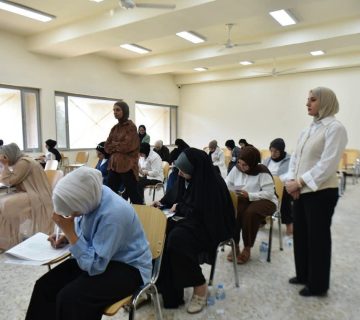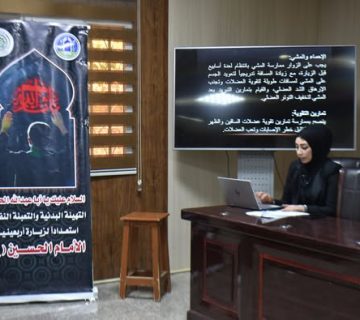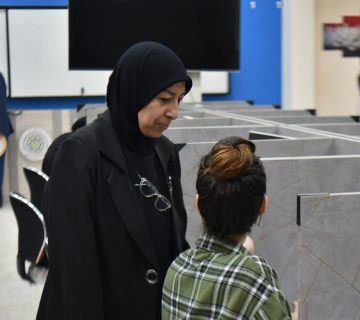Under the patronage of Professor Dr. Sameera Naji Khdim, Dean of the College of Sciences for Women, the Department of Physics, in cooperation with the Continuing Education Unit, organized a training course entitled “Ionizing Radiation, Its Health Effects, and Preventive Measures.” The course was delivered by Ms. Fadia Jabbar Alwan, Ms. Zainab Raad Salman, and Ms. Aya Othman Ramadan in the Medical Physics Laboratory. The event was attended by a number of faculty members and students from the department.
The course aimed to introduce participants to radiation, its types, sources, and characteristics—particularly ionizing radiation—its medical effects on the human body, the changes it induces, and the methods of protection due to its hazards and harmful consequences.
The course included a detailed explanation of the types of ionizing radiation, such as X-rays and gamma rays. These were defined as electromagnetic radiation similar in nature to light but with shorter wavelengths, meaning higher frequency and energy. They originate from nuclear reactions often accompanied by electron absorption. X-rays and gamma rays differ in their energy levels and external sources, with both possessing high penetration power.
Alpha radiation was defined as positively charged helium ions, characterized by large mass and positive charge. Although they have low penetration capability, they pose a significant threat when they enter the body via the digestive or respiratory systems or through wounds, potentially acting as internal radioactive sources.
Beta radiation was described in detail as consisting of charged particles—electrons or positrons—specifically negatively charged electrons with small mass and high energy. These particles have higher penetration capabilities than alpha particles, making them dangerous both inside and outside the body.
In terms of radiation applications, the course highlighted the use of X-rays in medical imaging and cancer treatment. However, it also stressed the potential risks associated with excessive exposure, which may lead to tissue or DNA damage, potentially resulting in cancer or genetic mutations.
To mitigate radiation risks, the course emphasized the importance of establishing barriers made of steel, concrete, or water to reduce exposure levels, maintaining a safe distance from radiation sources, and minimizing the duration of exposure near such sources.
The course also featured discussions and inquiries from attendees, which were addressed in detail by the lecturers.










